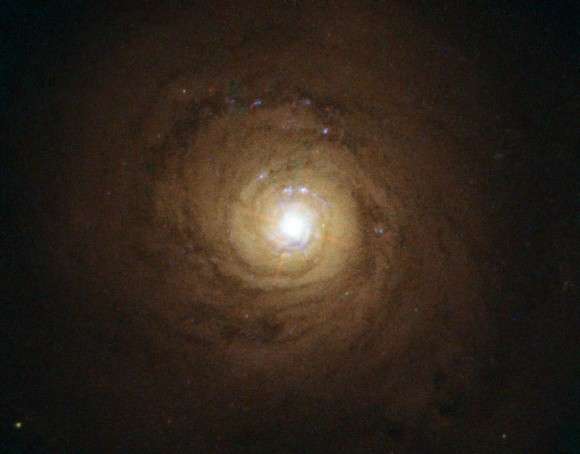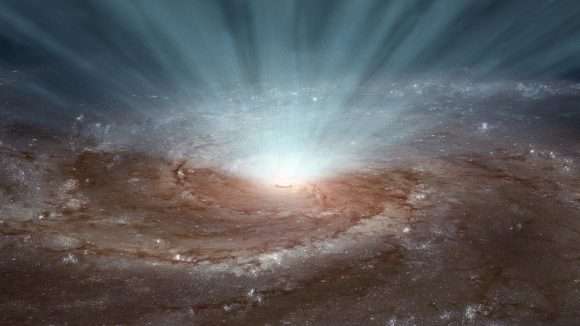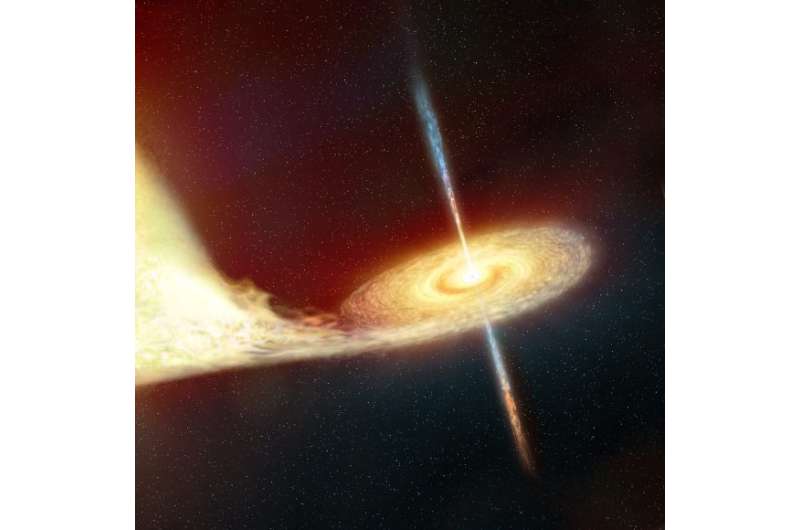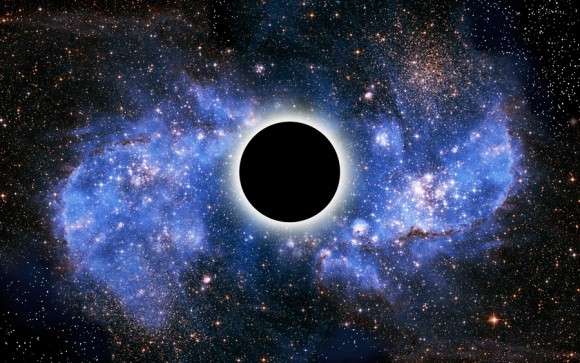How cold are black holes?

The very idea that a black hole could have a temperature strains the imagination. I mean, how can something that absorbs all the matter and energy that falls into it have a temperature? When you feel the warmth of a toasty fireplace, you're really feeling the infrared photons radiating from the fire and surrounding metal or stone.
And black holes absorb all the energy falling into them. There is absolutely no infrared radiation coming from a black hole. No gamma radiation, no radio waves. Nothing gets out.
Now, supermassive black holes can shine with the energy of billions of stars, when they become quasars. When they're actively feeding on stars and clouds of gas and dust. This material piles up into an accretion disk around the black hole with such density that it acts like the core of a star, undergoing nuclear fusion.
But that's not the kind of temperature we're talking about. We're talking about the temperature of the black hole's event horizon, when it's not absorbing any material at all.
The temperature of black holes is connected to this whole concept of Hawking Radiation. The idea that over vast periods of time, black holes will generate virtual particles right at the edge of their event horizons. The most common kind of particles are photons, aka light, aka heat.
Normally these virtual particles are able to recombine and disappear in a puff of annihilation as quickly as they appear. But when a pair of these virtual particles appear right at the event horizon, one half of the pair drops into the black hole, while the other is free to escape into the Universe.
From your perspective as an outside observer, you see these particles escaping from the black hole. You see photons, and therefore, you can measure the temperature of the black hole.
The temperature of the black hole is inversely proportional to the mass of the black hole and the size of the event horizon. Think of it this way. Imagine the curved surface of a black hole's event horizon. There are many paths that a photon could try to take to get away from the event horizon, and the vast majority of those are paths that take it back down into the black hole's gravity well.
But for a few rare paths, when the photon is traveling perfectly perpendicular to the event horizon, then the photon has a chance to escape. The larger the event horizon, the less paths there are that a photon could take.
Since energy is being released into the Universe at the black hole's event horizon, but energy can neither be created or destroyed, the black hole itself provides the mass that supplies the energy to release these photons.
The black hole evaporates.

The most massive black holes in the Universe, the supermassive black holes with millions of times the mass of the Sun will have a temperature of 1.4 x 10-14 Kelvin. That's low. Almost absolute zero, but not quite.
A solar mass black hole might have a temperature of only .0.00000006 Kelvin. We're getting warmer.
Since these temperatures are much lower than the background temperature of the Universe – about 2.7 Kelvin, all the existing black holes will have an overall gain of mass. They're absorbing energy from the Cosmic Background Radiation faster than they're evaporating, and will for an incomprehensible amount of time into the future.
Until the background temperature of the Universe goes below the temperature of these black holes, they won't even start evaporating.
A black hole with the mass of the Earth is still too cold.

Only a black hole with about the mass of the moon is warm enough to be evaporating faster than it's absorbing energy from the universe.
As they get less massive, they get even hotter. A black hole with the mass of the asteroid Ceres would be 122 Kelvin. Still freezing, but getting warmer.
A black hole with half the mass of Vesta would blaze at more than 1,200 Kelvin. Now we're cooking!
Less massive, higher temperatures.
When black holes have lost most of their mass, they release the final material in a tremendous blast of energy, which should be visible to our telescopes.

Some astronomers are actively searching the night sky for blasts from black holes which were formed shortly after the Big Bang, when the Universe was hot and dense enough that black holes could just form.
It took them billions of years of evaporation to get to the point that they're starting to explode now.
This is just conjecture, though, no explosions have ever been linked to primordial black holes so far.
It's pretty crazy to think that an object that absorbs all energy that falls into it can also emit energy. Well, that's the Universe for you. Thanks for helping us figure it out Dr. Hawking.
Provided by Universe Today





















